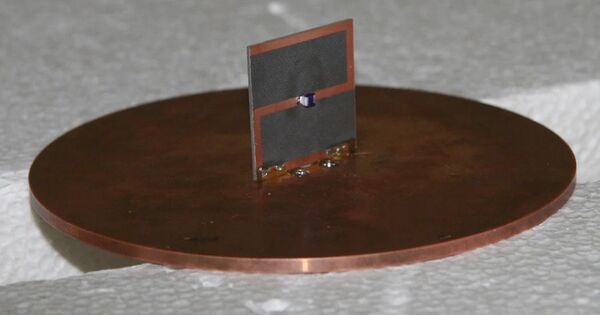Metamaterial antennas are a type of antenna that uses metamaterials to improve the performance of miniature (electrically small) antenna systems. Their function, like that of any other electromagnetic antenna, is to launch energy into space. However, this type of antenna uses metamaterials, which are materials created with unique, typically tiny, structures to achieve unexpected physical properties. Antenna designs with metamaterials can increase the antenna’s radiated power.
Metamaterial antennas have numerous potential applications, including telecommunications, radar systems, satellite communications, and medical devices. They can be configured to work in a wide range of frequency bands, from microwave to terahertz, making them suitable for a variety of applications.
Some common types of metamaterial antennas include:
- Metamaterial-inspired patch antennas: These antennas are typically made of a metamaterial substrate that enables miniaturization and improved performance compared to traditional patch antennas.
- Metamaterial-enhanced horn antennas: Horn antennas are widely used for high-gain applications. Metamaterials can be incorporated into the horn structure to improve performance, such as reducing side lobes and increasing directivity.
- Metamaterial-based metamaterial antennas: These antennas are entirely constructed from metamaterials and can exhibit extraordinary properties, such as negative refractive index, allowing for unconventional and highly efficient antenna designs.
- Metasurface antennas: Metasurfaces are 2D arrays of subwavelength structures that manipulate electromagnetic waves. They can be used to create flat, low-profile antennas with controllable radiation patterns and polarization properties.
Advantages
One of the primary benefits of metamaterial antennas is its ability to manipulate electromagnetic waves in ways that regular antennas cannot. They can be created with qualities such as a negative refractive index, allowing for unique antenna designs with superior performance attributes such as increased gain, smaller size, wider bandwidth, and higher radiation efficiency.
Applications
Conventional antennas are quite small in comparison to the wavelength and reflect the majority of the signal back to the source. Because of its unique structure, a metamaterial antenna behaves as if it were considerably larger than it is. Metamaterial elements can be printed on a PC board using standard lithography processes.
These unique antennas are useful for applications such as portable contact with satellites, broad angle beam steering, emergency communications devices, micro-sensors, and portable ground-penetrating radars that search for geophysical characteristics. Metamaterial antennas have a variety of uses, including wireless communication, space communications, GPS, satellites, space vehicle navigation, and aircraft.
Metamaterial antenna research is underway, with the goal of pushing antenna design and performance to new highs. As technology improves, we should expect to see even more imaginative uses of metamaterials in antenna design.
















